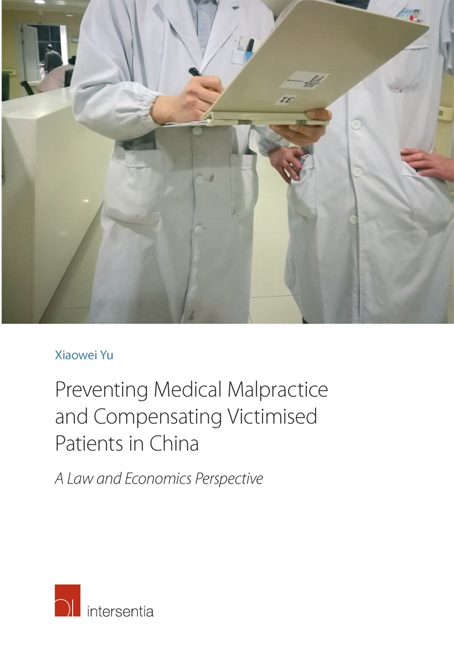 Preventing Medical Malpractice and Compensating Victimised Patients in China
Preventing Medical Malpractice and Compensating Victimised Patients in China Book contents
- Frontmatter
- Acknowledgements
- Contents
- Abbreviations
- List of Figures and Tables
- Chapter 1 Introduction
- Part I Legal Remedies for Medical Malpractice in China
- Introductory Note
- Chapter 2 Health Care Provision and Regulation
- Chapter 3 Compensation for Iatrogenic Injuries under Tort Law
- Chapter 4 Medical Disputes, Iatrogenic Injury, Malpractice Litigation, and Patient Compensation: Empirical Evidence
- Chapter 5 Other Compensation Schemes
- Chapter 6 A Doctrinal Evaluation and Tentative Conclusions
- Part II Economic Theories and Empirical Evidence
- Part III Applying the Economic Observations to China
- Summary
- Bibliography
- Appendix 1 Legislation
- Appendix 2 Cases
- Appendix 3 Semi-Structured Interviews
- Valorisation Addendum
- Curriculum Vitae
Chapter 6 - A Doctrinal Evaluation and Tentative Conclusions
from Part I - Legal Remedies for Medical Malpractice in China
Published online by Cambridge University Press: 29 September 2018
- Frontmatter
- Acknowledgements
- Contents
- Abbreviations
- List of Figures and Tables
- Chapter 1 Introduction
- Part I Legal Remedies for Medical Malpractice in China
- Introductory Note
- Chapter 2 Health Care Provision and Regulation
- Chapter 3 Compensation for Iatrogenic Injuries under Tort Law
- Chapter 4 Medical Disputes, Iatrogenic Injury, Malpractice Litigation, and Patient Compensation: Empirical Evidence
- Chapter 5 Other Compensation Schemes
- Chapter 6 A Doctrinal Evaluation and Tentative Conclusions
- Part II Economic Theories and Empirical Evidence
- Part III Applying the Economic Observations to China
- Summary
- Bibliography
- Appendix 1 Legislation
- Appendix 2 Cases
- Appendix 3 Semi-Structured Interviews
- Valorisation Addendum
- Curriculum Vitae
Summary
INTRODUCTION
After describing all the Chinese legal remedies related to medical quality assurance and victim compensation, one may wonder how these systems perform. However, before conducting any meaningful evaluation, one needs to make clear the benchmarks against which the legal remedies will be evaluated.
There are at least three doctrinal benchmarks that are widely used in China – legal certainty, effectiveness, and fairness, which are defined as follows:
- Legal certainty. Legal certainty is essential to the principle “treat like cases alike” and legal effectiveness. To guarantee legal certainty, at least two conditions must be met: (1) legal concepts and rules must be as unequivocal and as clear as possible, and different legal rules must not conflict with or contradict one another; and (2) the procedures and criteria for fact finding must be clear and consistent.
- Effectiveness. Each legal rule may have its own functions to fulfil. Lawmakers enact certain statutes because they intend to achieve some goals. A certain legal rule is said to be effective if it achieves its legislative goals in practice. A legal rule is de facto if not de jure invalid if it is ineffective at fulfilling its functions.
- Fairness or justice. As the saying goes, “Ius est ars boni et aequi,” i.e. the “law is the art of good order and justice.” In China, legal scholars also generally recognised that the most important value of the law is to achieve justice. As far as tort law is concerned, most Chinese tort scholars maintain that the basic rationale behind tort law is corrective justice, i.e. tortfeasors ought to restore victims to their pre-accident situations through compensation. In order words, tort law is intended to provide victims with fair and adequate compensation. This goal is also stressed by art. 1 of the Tort Law 2009 as victim protection – “to protect the legitimate rights and interests of parties in civil law relationships.” Therefore, the compensation function of tort law in China is generally considered to be a means to an end – corrective justice.
- Type
- Chapter
- Information
- Preventing Medical Malpractice and Compensating Victimised Patients in ChinaA Law and Economics Perspective, pp. 197 - 206Publisher: IntersentiaPrint publication year: 2017


